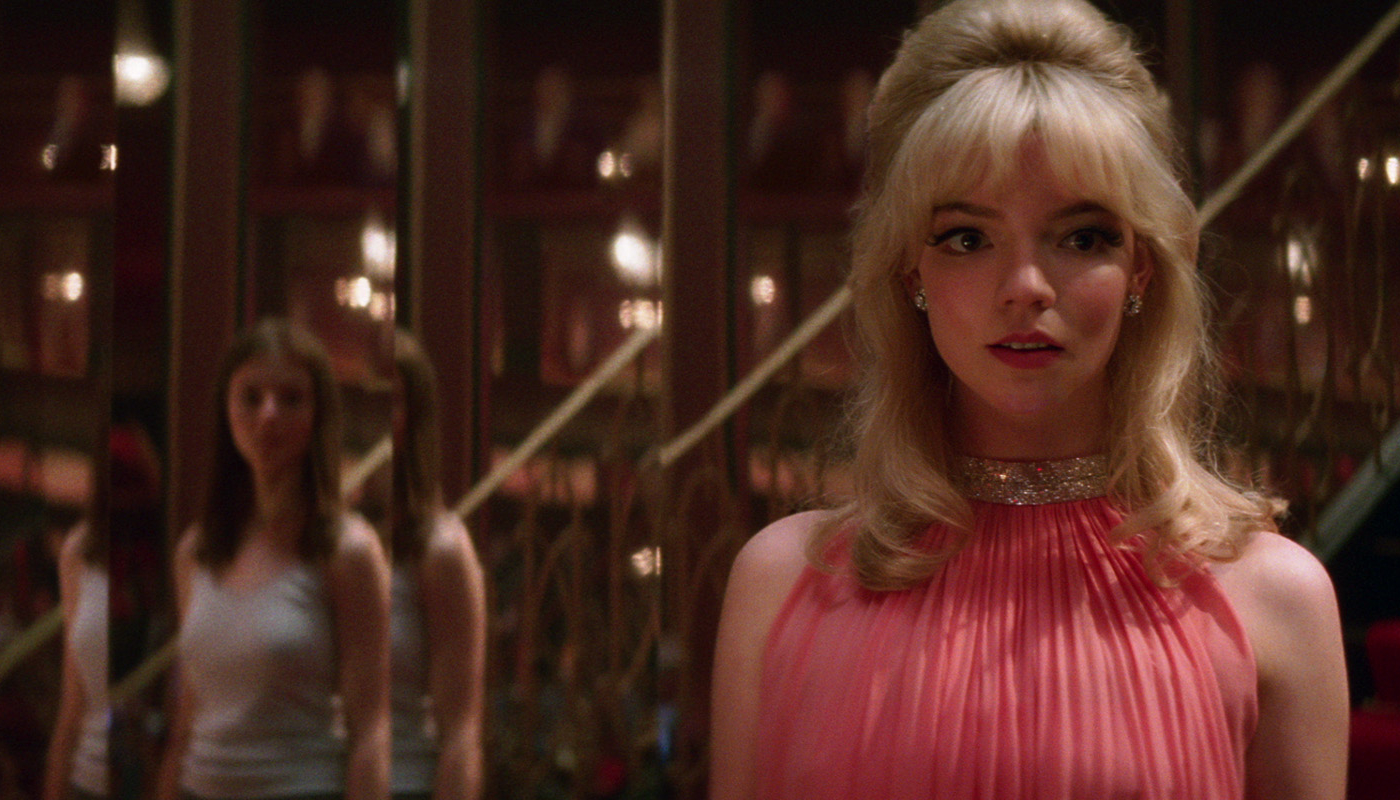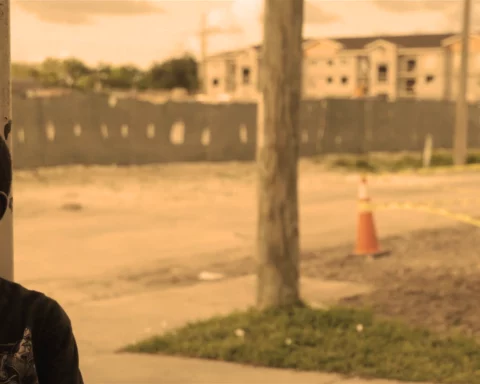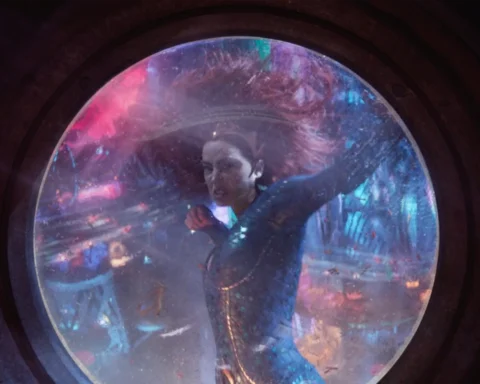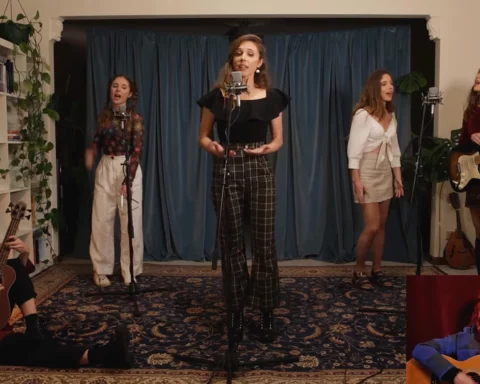Halfway into Edgar Wright’s latest film, Last Night in Soho, I stumbled and fell in love with everything in it.
Some friends and I had dressed up last minute in Halloween fits, tipsy and stuffed with nacho cheese. We could not wait to see Anya Taylor-Joy looking hot in glitzy Soho. I entered expecting aesthetics and came out with an array of emotions and impressions. It was that energy signaling to me that I had to write about this film – in whatever way I could.
While there is a lot to say about the feminist themes concerning the horror-thriller, I want to cover the topic of alienation and nostalgia, and the lethal aura circling the ‘rose-tinted’ lens of the past. I will talk particularly of the relationship between Eloise ‘Ellie’ Turner (Thomasin McKenzie) and Sandie (Taylor-Joy) and their representative eras.
SPOILERS AHEAD
(Click to expand the warning boxes to reveal spoilers.)
I directed a lot of my awe not towards the glamorous Sandie Collins in her peach tent dress, but the convincing protagonist who projects Sandie’s story, Ellie Turner. A girl experiencing her transition into fashion college, outcasted due to her obsession with the ‘Swinging Sixties’. The suit and ties, youth culture, and cinematic flair today’s culture associates with the bygone era makes us all guilty of romanticising the past, something that was rather natural to those who lived through it. Ellie is perhaps more relatable than we like to think. Haven’t we all had misconceptions of the past, turning something into a spectacle when it had its bad moments too?
Ellie, approaching adulthood, is nervous and vulnerable in her new environment. Jocasta, another fashion student in her accommodation, immediately clashes with Ellie as a personification of 21st-century individualism. She desires to be remembered by one name (likely inspired by past idols) and exudes a self-centredness when Ellie tries to talk about her problems.
It was interesting how this set up the modern environment as antagonistic, with Ellie’s nostalgia comparatively more sympathetic. Looking back, I ask, is Eloise really so estranged from 21st-century modernity? Especially when nowadays, adopting aesthetics from bygone eras has become decidedly ‘modern’ – internet aesthetics and vintage subcultures are hardly between far and few.
Shortly after Ellie moves into a flat owned by enigmatic landlady Ms. Collins (Diana Rigg), Ellie is absorbed into a rich sub-reality projected through her dreams. Sandie, a beautiful performer with great potential, is first shown in her audition for a Soho Nightclub. Jack (Matt Smith), the manager, is positioned as a love interest, and the night is full of bright lights, suit and ties, vesper cocktails, and romantic tension. The camera angles, music, and visuals were truly enchanting, as though the audience were thrust into the Swinging Sixties alongside Ellie. I thought, ‘Sure, Ellie is creating her own reality to escape into, seems plausible’, reflecting off of its magical portrayal. But despite this eerieness, I did not foresee the supernatural twist to come.
Sandie’s life seems desirable. At first, she has everything – the looks, the voice, the manager. Sandie appears more as an abstract concept or ‘ideal’ than a complete person. However, we learn that this is a farce. We know that Ellie has a vivid imagination and a love for the sixties, but rather than inventing Sandie, Sandie uses Ellie as the perfect host to project her memories.
The more time passes, the more the dreams warp into sinister visions.
[su_spoiler open=”no” title=”Spoiler — Read at your own risk.” style=”fancy” icon=”plus-circle”] Jack soon pimps Sandie out to his business associates, in which we see a commentary on the objectification and exploitation of women in the performance industry. An unnerving moment where Ellie navigates the backstage of this sub-reality, with the performers in sexual servitude to the men in the audience, struck a chord in me. [/su_spoiler]
[su_spoiler open=”no” title=”Spoiler — Read at your own risk.” style=”fancy” icon=”plus-circle”] In the previous scene, the men were a cattle like audience of suits, receiving and praising the women’s performance, high on stage. The abrupt switch in power dynamics – the women on their knees – was a disturbing, impressive visual representation to say the least. [/su_spoiler]
[su_spoiler open=”no” title=”Spoiler — Read at your own risk.” style=”fancy” icon=”plus-circle”] This was a clever way for the real Sandie to shatter Ellie’s illusions regarding the era. As the dreams descend into nightmares and Ellie’s mental stability falters, we see the businessmen turn violent towards Sandie. Ellie experiences a false awakening and sees one of these men in her room, for the audience to question what is real and what is not. [/su_spoiler]
[su_spoiler open=”no” title=”Spoiler — Read at your own risk.” style=”fancy” icon=”plus-circle”] Ellie’s perspective grows unreliable, indicating other forces at play. The supernatural enters so subtly we don’t notice it, due to the rawness and the horror of Sandie’s reality, which at that moment, seems eviler and greater than any supernatural entity.[/su_spoiler]
Ellie’s nostalgia is punished as she is revealed to Sandie’s lived experience. The more it consumes her, the more we get a better picture of what this film warns us against. Nostalgia – is dangerous. Nostalgia insults. Nostalgia kills.
[su_spoiler open=”no” title=”Spoiler — Read at your own risk.” style=”fancy” icon=”plus-circle”] It is this symbiotic relationship; much like Sandie poses a threat to Ellie’s nostalgia, Ellie is a threat to Sandie’s reality. As Ellie’s visions reveal Sandie murdering dozens of men out of revenge, we are introduced to Sandie’s capacity to kill – her potential as a feminine agent of rage.[/su_spoiler]
[su_spoiler open=”no” title=”Spoiler — Read at your own risk.” style=”fancy” icon=”plus-circle”] When Sandie is revealed to be landlady Alexandra Collins, it is no wonder that she desires to get rid of Ellie, or more symbolically, the illusion concealing the reality.[/su_spoiler]
The Swinging Sixties was a transformative time in Western fashion and culture. Mary Quant’s miniskirt and the rise of the contraceptive pill helped push for sexual liberation, particularly with women. Last Night in Soho shows this through the character of Sandie, who is free and even encouraged to pursue men. But the film also captures the darker layers beneath this ‘liberation’, revealing the unequal power dynamics where the men are free to objectify and use women withless societal taboo surrounding sex. It would only be due to second and later waves of feminism where society would properly address these issues.
[su_spoiler open=”no” title=”Spoiler — Read at your own risk.” style=”fancy” icon=”plus-circle”] I feared the story would end in tragedy, but seeing Ellie’s happy ending as a budding designer had me sighing in relief. Perhaps it’s that she and I both hold fond feelings for bygone eras, aesthetically and creatively, that I underwent a similar lesson to her.[/su_spoiler]
We were both once individuals locked inside a pocket of time, clashing with peers, until we had to let go of our adolescent fantasies. Instead of looking to the past, we, as adults, vow to look towards a better tomorrow.
















